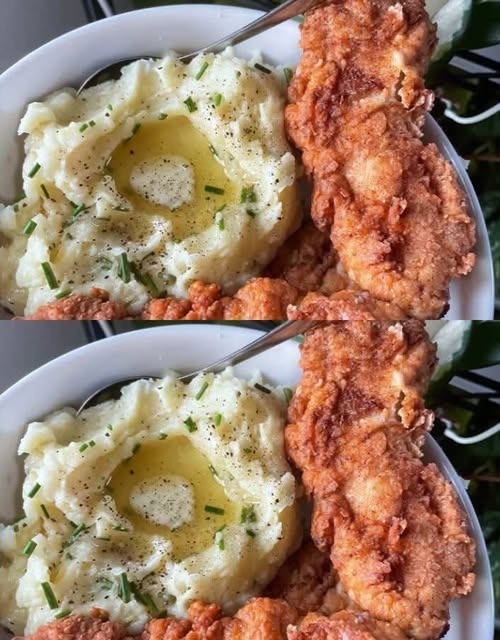ADVERTISEMENT
1. Lack of Flavor Infusion
When you boil potatoes in plain water, you’re not infusing them with any extra flavor. The potatoes absorb only the water’s subtle taste, which doesn’t contribute much to the overall flavor profile. While butter, salt, and cream can help add flavor during the mashing process, the potatoes themselves will be bland, resulting in mashed potatoes that may lack depth.
2. Potatoes Can Become Waterlogged
Potatoes are highly absorbent, and when boiled in water, they soak up moisture from the cooking liquid. If you’ve ever ended up with mashed potatoes that feel watery or heavy, this could be the reason. When potatoes absorb excess water, they become soggy, making it harder to achieve a creamy texture. You end up having to use more butter, cream, or milk to compensate, which can sometimes lead to a greasy or overly rich dish.
3. Nutrient Loss
Boiling potatoes in water causes some of the vitamins and minerals, such as vitamin C and potassium, to leach out into the water. This means that a portion of the potato’s nutritional value is lost during the cooking process, especially if you discard the cooking water afterward.
The Game-Changer: Boiling Potatoes in Broth or Stock
Now, let’s explore the method that my grandma swears by: boiling potatoes in broth or stock instead of plain water. This simple change not only improves the flavor but also enhances the texture and nutritional value of your mashed potatoes.
1. Enhanced Flavor Profile
The primary advantage of using broth or stock to boil your potatoes is the rich, savory flavor it imparts. Stock, whether made from chicken, beef, or vegetables, contains concentrated flavors from the ingredients it’s made from. When potatoes are boiled in broth, they absorb some of these flavors, making them inherently more flavorful from the inside out. You won’t need to load up your mashed potatoes with excessive amounts of salt or butter to make them taste good; the broth does the heavy lifting.
Tip: If you want to experiment, try different types of broth for varying flavors. Chicken broth can add a savory richness, vegetable stock is perfect for a more neutral, herbaceous flavor, and beef broth will give your potatoes a hearty depth.
2. Creamier Texture Without the Excess Moisture
As we discussed earlier, when potatoes are boiled in water, they tend to absorb excess moisture, which can lead to watery mashed potatoes. This is especially true if the potatoes are boiled for too long. By boiling your potatoes in broth, the liquid helps to steam and cook the potatoes more evenly, which results in a creamier, fluffier texture.
Broth also prevents the potatoes from becoming waterlogged, so you won’t need to use as much butter or cream to get the right consistency. The potatoes will absorb just enough of the broth to achieve the perfect balance of creaminess without feeling greasy.
3. Retaining Nutrients
Unlike water, broth is packed with nutrients that are beneficial for your body, such as collagen, minerals, and vitamins. When you boil potatoes in broth, you’re infusing them with extra nutritional value. Additionally, broth retains a portion of the vitamins and minerals from the vegetables, meats, or herbs used to make it, which is something you miss when using water.
For example, chicken broth contains amino acids, while vegetable stock is rich in antioxidants. By boiling your potatoes in these liquids, you’re adding an extra layer of nutrition to your mashed potatoes, making them even more satisfying and healthy.
How to Make the Perfect Mashed Potatoes with Broth
Ready to take your mashed potatoes to the next level? Here’s how you can incorporate broth into your mashed potato recipe for a guaranteed flavor upgrade.
Ingredients:
4-5 large potatoes (Yukon Gold or Russet work best)
2-3 cups of broth (vegetable, chicken, or beef, depending on your preference)
1/4 cup of unsalted butter (or more, to taste)
1/2 cup of cream, milk, or half-and-half (adjust to desired consistency)
Salt and pepper to taste
Optional: Garlic, herbs, or cheese for extra flavor
For Complete Cooking STEPS Please Head On Over To Next Page Or Open button (>) and don’t forget to SHARE with your Facebook friends
